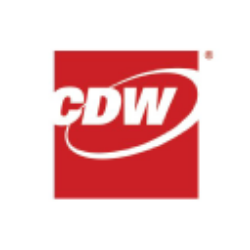What Defines the Evolution of Competition in Modern Markets?
Competition is no longer a static battlefield where companies fight for market share with fixed strategies. Instead, it has evolved into a dynamic, multi-layered contest shaped by technological disruption, shifting consumer preferences, regulatory changes, and the relentless pursuit of innovation. Below, we break down this evolution, its definition, and practical implications across industries.
I. Definition: What Is the Evolution of Competition?
The "evolution of competition" refers to the structural transformation in how industries and companies compete over time. This includes:
- New entrants disrupting established players (e.g., Tesla vs. legacy automakers).
- Technological advancements redefining value chains (e.g., NVIDIA’s GPUs enabling AI infrastructure).
- Regulatory shifts altering competitive landscapes (e.g., U.S. subsidy rules impacting Tesla’s China-made batteries).
- Consumer behavior changes forcing adaptation (e.g., Spotify vs. Apple Music in streaming).
At its core, this evolution is driven by the erosion or reinforcement of economic moats—structural advantages that protect profits from competitors.
II. The Meaning: Why Does Competition Evolve?
Competition evolves because no advantage is permanent. Consider:
- Margin Pressures: Intense rivalry often leads to price wars. For example, U.S. wireless carriers (Verizon, AT&T, T-Mobile) extended holiday promotions into Q1 2025, squeezing margins despite their "narrow moat" ratings.
- Innovation Cycles: NVIDIA faces rising competition from AMD in GPUs and Intel in ARM-based processors, forcing continuous R&D investment to maintain its edge.
- Market Saturation: Tesla’s dominance in EVs is challenged by automakers like Ford and BYD electrifying fleets, even as the EV market expands to 30% of auto sales by 2030.
- Substitute Threats: Comcast battles fiber operators and fixed wireless providers (e.g., T-Mobile’s 5G home internet), forcing convergence strategies like bundling mobile services.
III. How to Understand Competition’s Evolution
1. Analyze Industry Dynamics
- Telecom: Verizon’s 7% stock drop in March 2025 after aggressive rival promotions highlights how efficient scale moats can be tested.
- Retail: Costco withstands e-commerce competition by focusing on high-frequency, low-margin groceries (66% of sales), which are less prone to online disruption.
2. Track Technological Tipping Points
- NVIDIA’s dominance in AI chips is challenged by custom ASIC solutions, but its software ecosystem and Blackwell architecture (40x performance gains) reinforce its moat.
- Adobe fights Canva’s low-cost design tools by integrating AI into its Creative Cloud suite.
3. Assess Regulatory and Macro Risks
- Tesla’s reliance on Chinese batteries for the Model 3 limits U.S. subsidy eligibility, creating vulnerabilities.
- Elimination of the "De Minimis" tariff exemption could ease pressure on Amazon from Chinese e-commerce platforms like Temu.
4. Evaluate Adaptability
- Winners: Procter & Gamble invests 13% of sales ($13B annually) in R&D and marketing to maintain brand leadership despite private-label threats.
- Strugglers: PayPal’s "legacy checkout button" stigma requires reinvention through Venmo and omni-commerce solutions to match e-commerce growth.
IV. Practical Examples of Evolutionary Forces
| Industry | Evolutionary Driver | Example |
|---|---|---|
| Automotive | EV adoption and autonomy race | Tesla’s Robotaxi ambitions vs. Waymo’s operational lead. |
| Semiconductors | AI infrastructure demand | NVIDIA’s CUDA ecosystem vs. AMD’s MI300X and Intel’s Gaudi 3 chips. |
| Insurance | Commoditization and data analytics | Progressive’s direct-channel efficiency vs. rivals’ agent-dependent models. |
| Media | Streaming and content aggregation | Spotify’s licensing risks vs. Apple Music’s integrated hardware advantage. |
V. Risks in Ignoring Competition’s Evolution
Companies that fail to adapt face existential threats:
- Kraft Heinz risks losing share to private-label brands if pricing elasticity worsens.
- Cisco struggles as software-defined networking lowers hardware barriers, favoring agile startups.
- Qualcomm’s royalty business faces pressure from Huawei’s resolution terms and ARM-based rivals.
Conclusion: Staying Ahead of the Curve
The evolution of competition demands proactive agility. Leaders like NVIDIA and Tesla thrive by turning disruptions into opportunities (e.g., AI compute dominance, brand loyalty in EVs). Conversely, laggards like traditional telecoms or insurers risk margin erosion without reinvention. For investors, the key is identifying firms with durable moats—whether through innovation (NVIDIA), scale (Verizon), or brand power (P&G)—while monitoring shifts that could upend even the strongest players.
In the words of Darwin: "It is not the strongest that survive, but those most adaptable to change."























